
How to Use Voltmeter: Examples, Pinouts, and Specs
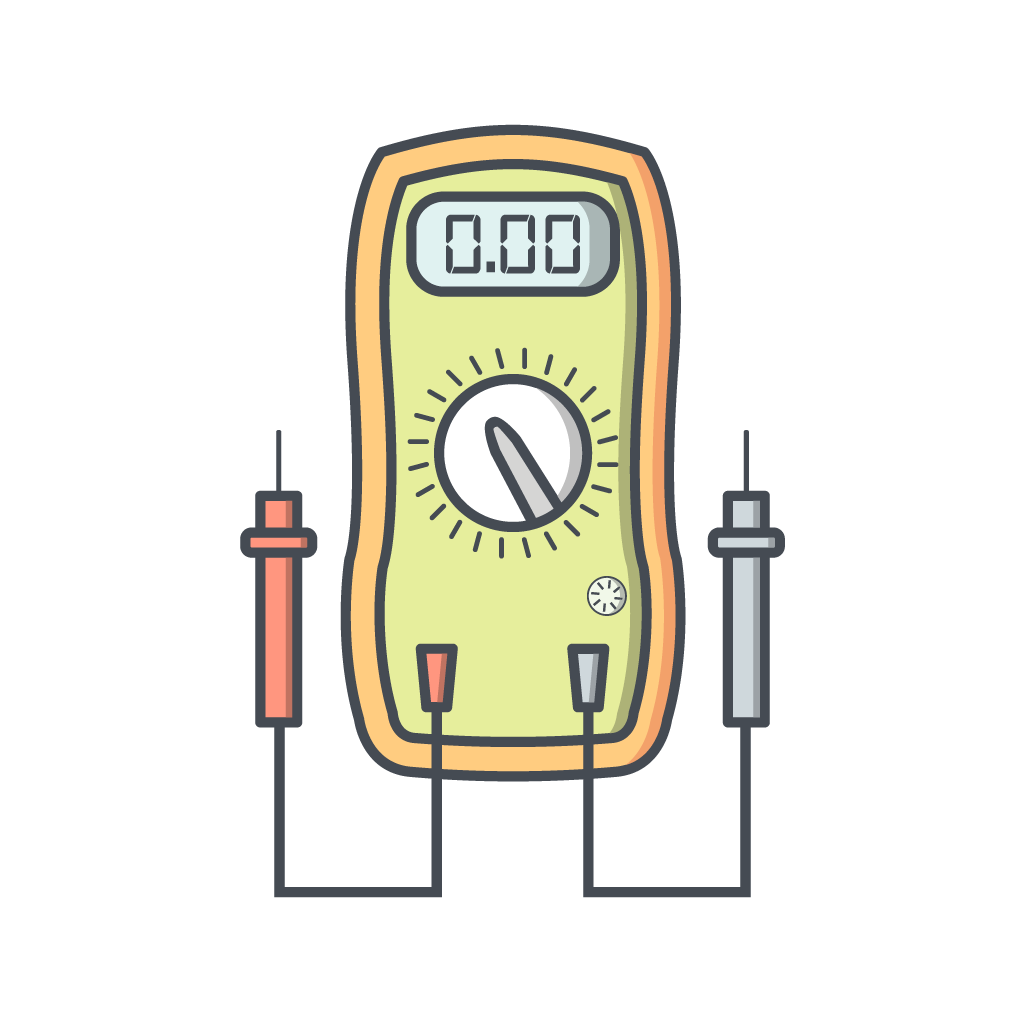
 Design with Voltmeter in Cirkit Designer
Design with Voltmeter in Cirkit DesignerIntroduction
A voltmeter is an instrument used for measuring the electrical potential difference between two points in an electric circuit. It is an essential tool for anyone working with electronics, from hobbyists to professional engineers. Voltmeters can be analog or digital, with digital voltmeters (DVMs) being more common due to their higher accuracy and ease of use.
Explore Projects Built with Voltmeter
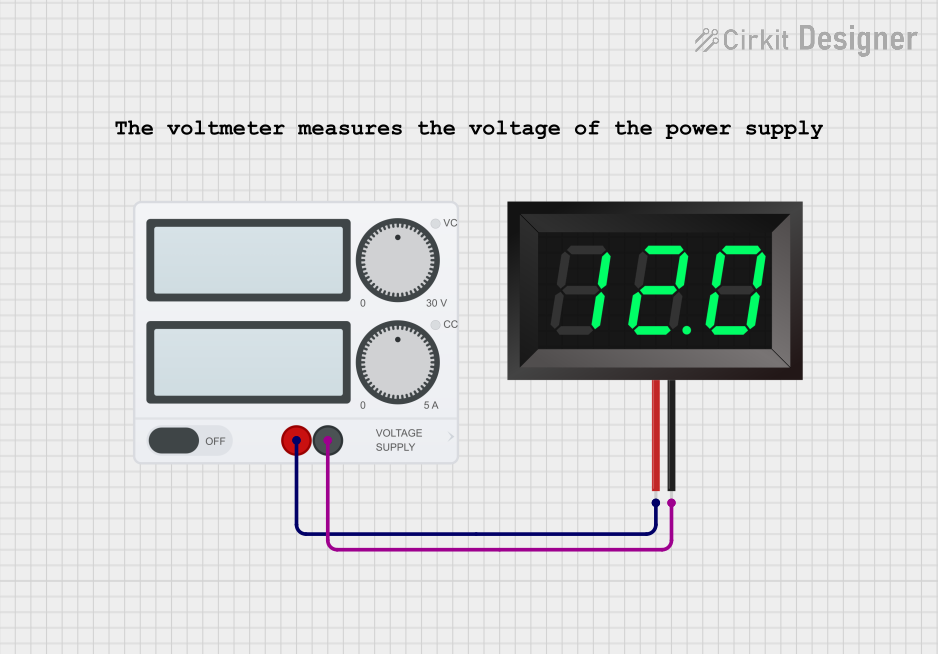
 Open Project in Cirkit Designer
Open Project in Cirkit Designer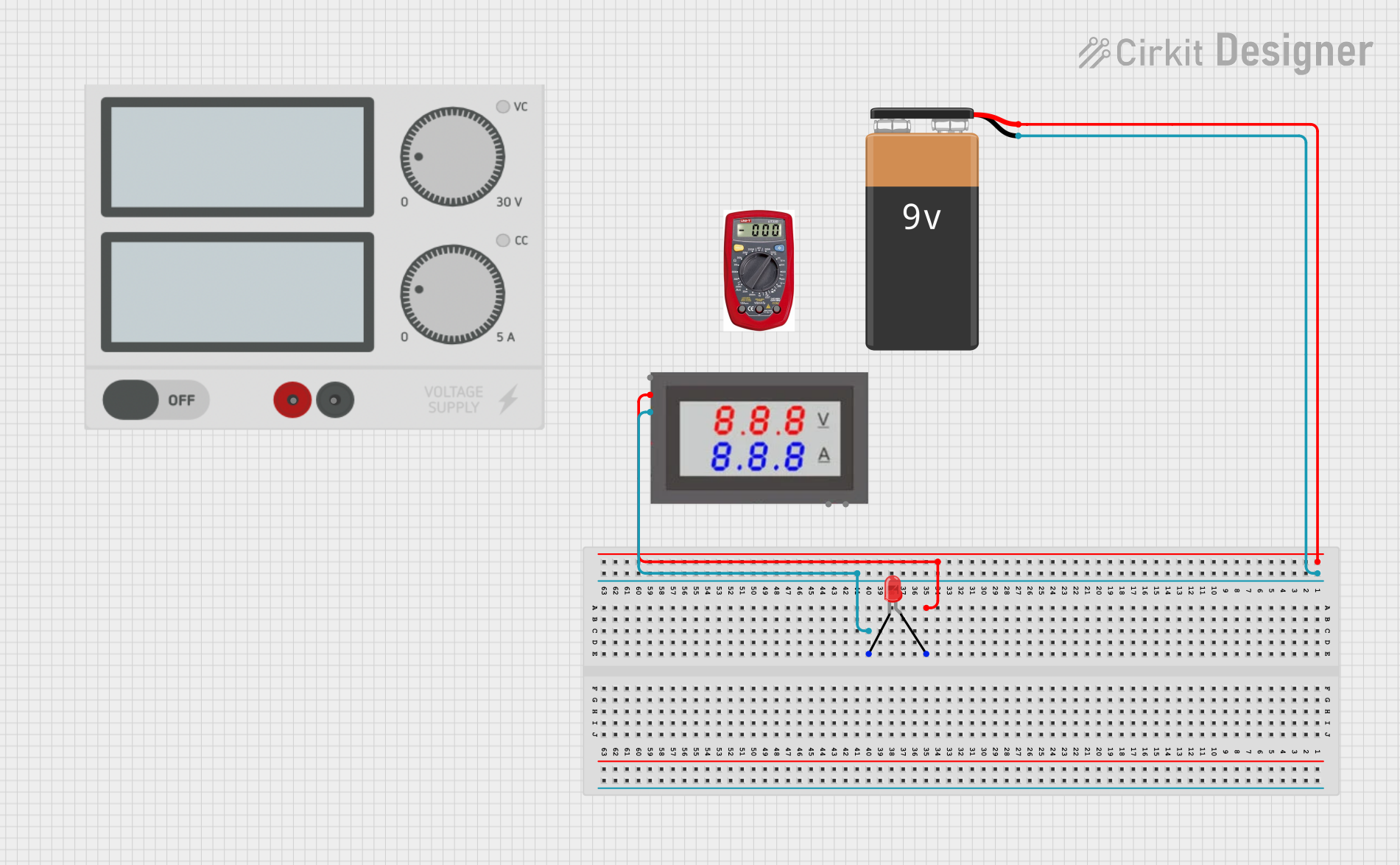
 Open Project in Cirkit Designer
Open Project in Cirkit Designer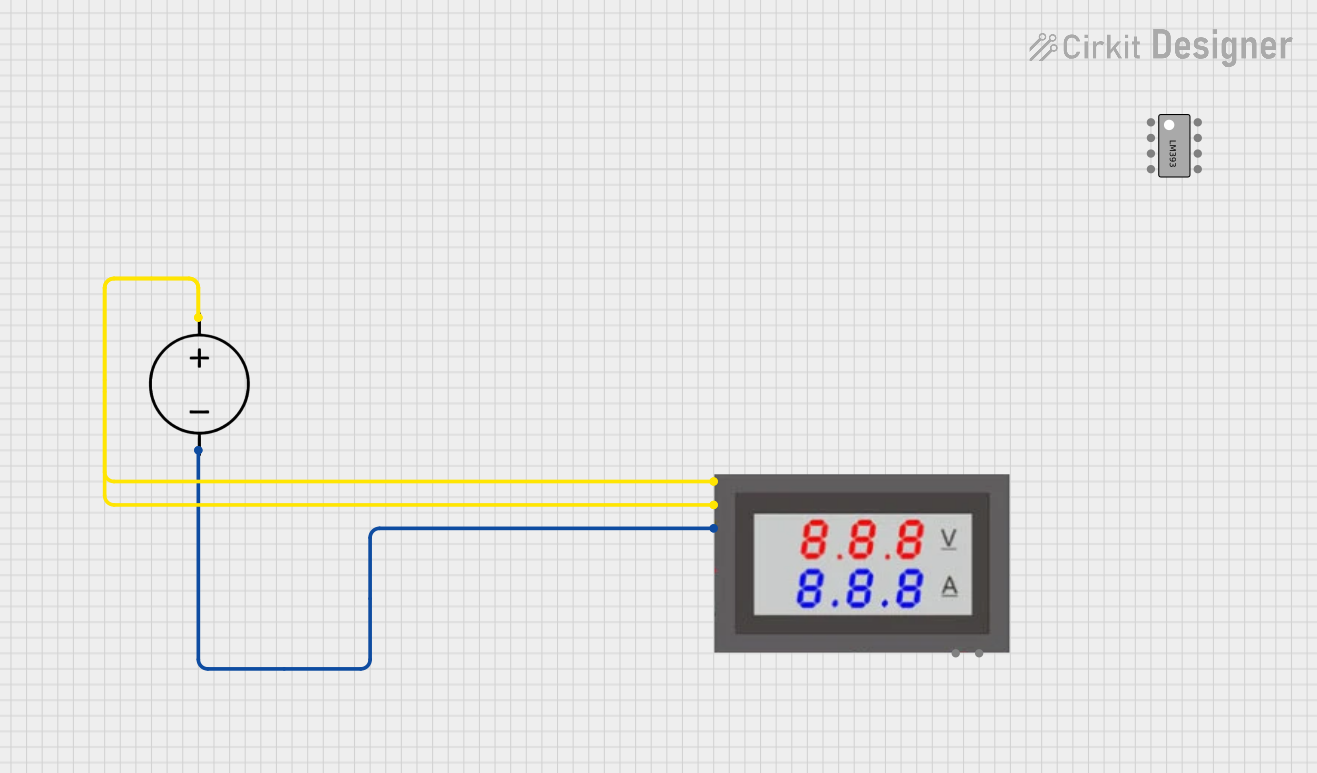
 Open Project in Cirkit Designer
Open Project in Cirkit Designer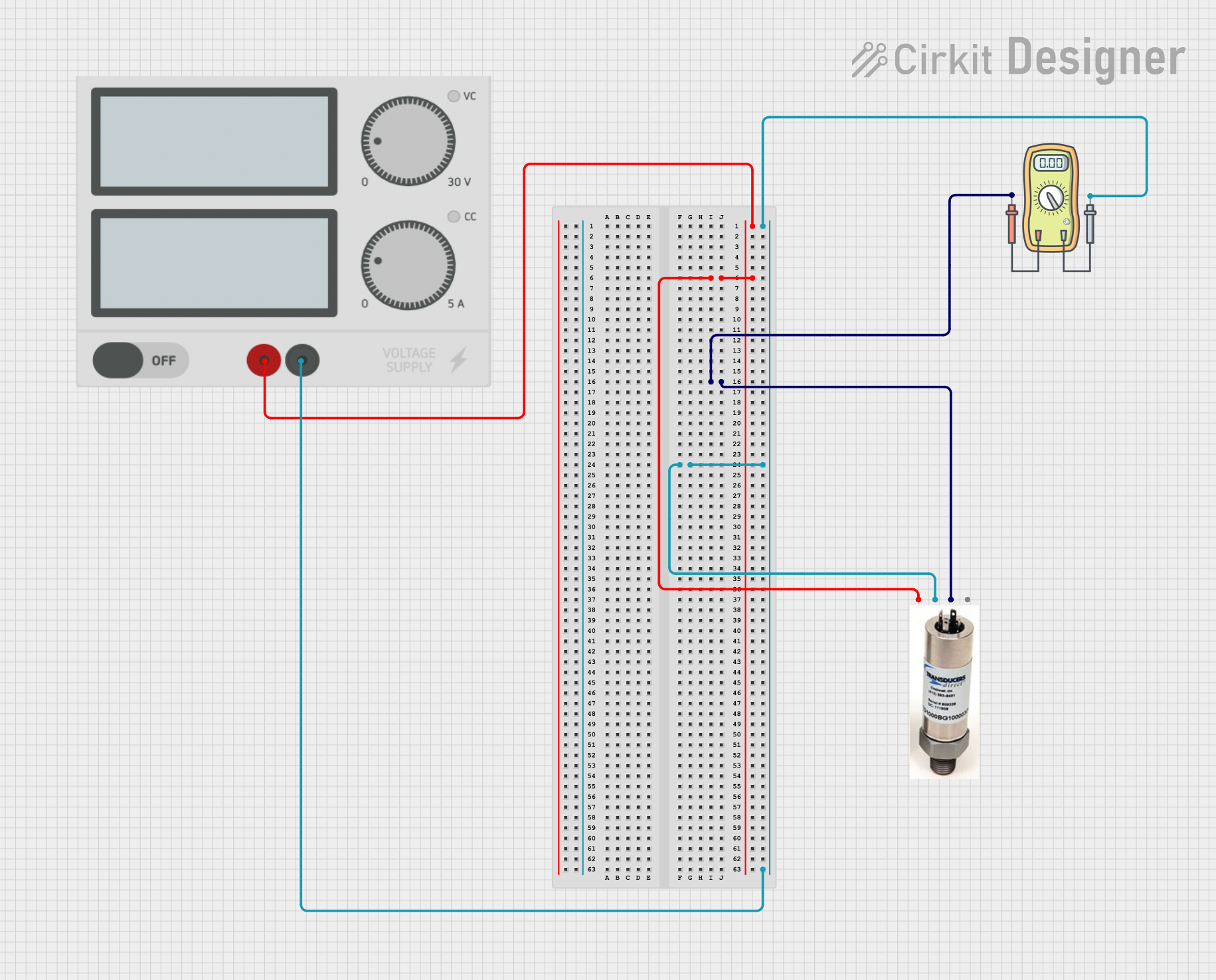
 Open Project in Cirkit Designer
Open Project in Cirkit DesignerExplore Projects Built with Voltmeter

 Open Project in Cirkit Designer
Open Project in Cirkit Designer
 Open Project in Cirkit Designer
Open Project in Cirkit Designer
 Open Project in Cirkit Designer
Open Project in Cirkit Designer
 Open Project in Cirkit Designer
Open Project in Cirkit DesignerCommon Applications and Use Cases
- Circuit Testing: To verify the voltage levels in various parts of a circuit.
- Battery Testing: To check the voltage of batteries to determine their charge level.
- Power Supply Monitoring: To ensure that power supplies are providing the correct voltage.
- Troubleshooting: To diagnose issues in electronic circuits by checking voltage levels.
Technical Specifications
Key Technical Details
| Specification | Value |
|---|---|
| Voltage Range | 0 - 600V (varies by model) |
| Accuracy | ±0.5% of reading |
| Display Type | Digital (LCD/LED) |
| Input Impedance | 10 MΩ |
| Power Supply | 9V Battery or External Power |
| Dimensions | 150mm x 70mm x 30mm |
| Weight | 200g |
Pin Configuration and Descriptions
| Pin Number | Pin Name | Description |
|---|---|---|
| 1 | V+ | Positive voltage input |
| 2 | V- | Negative voltage input (ground) |
| 3 | COM | Common ground (for external power supply) |
| 4 | Vcc | Positive power supply input (for external power) |
Usage Instructions
How to Use the Voltmeter in a Circuit
Powering the Voltmeter:
- If using a battery, insert a 9V battery into the battery compartment.
- If using an external power supply, connect the positive terminal to the Vcc pin and the negative terminal to the COM pin.
Connecting to the Circuit:
- Connect the V+ pin to the point in the circuit where you want to measure the voltage.
- Connect the V- pin to the ground or reference point in the circuit.
Reading the Voltage:
- Turn on the voltmeter.
- The voltage reading will be displayed on the screen.
Important Considerations and Best Practices
- Polarity: Ensure correct polarity when connecting the voltmeter to avoid damage.
- Range Selection: If your voltmeter has multiple ranges, select the appropriate range for the voltage you expect to measure.
- Input Impedance: High input impedance is crucial to avoid loading the circuit and affecting the measurement.
- Safety: Always follow safety guidelines, especially when measuring high voltages.
Troubleshooting and FAQs
Common Issues and Solutions
No Display or Incorrect Reading:
- Solution: Check the power supply (battery or external). Ensure proper connections and that the battery is not depleted.
Fluctuating Readings:
- Solution: Ensure stable connections. Fluctuations can be caused by loose connections or interference.
Overload Indication:
- Solution: If the voltmeter displays an overload indication, switch to a higher voltage range.
FAQs
Q1: Can I use the voltmeter to measure AC voltage?
- A1: Yes, but ensure your voltmeter is rated for AC voltage measurement and select the appropriate mode.
Q2: What should I do if the voltmeter shows a negative reading?
- A2: This indicates that the polarity is reversed. Swap the V+ and V- connections.
Q3: How often should I calibrate my voltmeter?
- A3: Calibration frequency depends on usage, but generally, it should be calibrated annually for accurate measurements.
Example Code for Arduino UNO
If you are using a digital voltmeter module with an Arduino UNO, you can use the following example code to read and display the voltage:
// Define the analog pin where the voltmeter is connected
const int voltmeterPin = A0;
void setup() {
// Initialize serial communication at 9600 baud rate
Serial.begin(9600);
}
void loop() {
// Read the analog value from the voltmeter pin
int sensorValue = analogRead(voltmeterPin);
// Convert the analog value to voltage
// Assuming a 5V reference voltage and 10-bit ADC (0-1023)
float voltage = sensorValue * (5.0 / 1023.0);
// Print the voltage to the serial monitor
Serial.print("Voltage: ");
Serial.print(voltage);
Serial.println(" V");
// Wait for 1 second before taking another reading
delay(1000);
}
This code reads the voltage from an analog pin connected to the voltmeter and prints the value to the serial monitor. Ensure that the voltmeter module is properly connected to the Arduino UNO.
By following this documentation, users can effectively utilize a voltmeter in various applications, ensuring accurate and reliable voltage measurements.